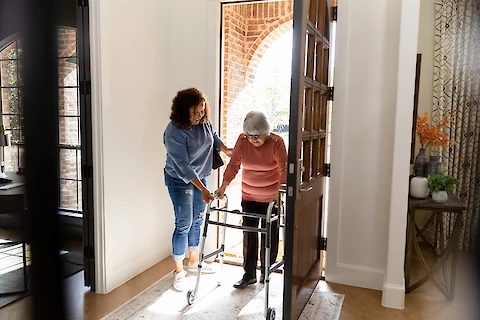
For seniors with limited mobility, managing floorspace and creating an accessible home environment is essential. Whether you are recovering from an injury or living with a chronic condition, adjusting your space to accommodate mobility issues can improve safety and provide comfort in daily life. Implementing accessible design strategies that provide more floor space can make your home easier to navigate and prevent injuries.
Why Accessible Home Environments Are Important
Safety
Safety is a top priority when it comes to accessible home environments. Clutter and lack of floor space can make homes difficult to navigate and can present serious injury risks. Keeping walkways clear and open allows more space to move and eliminates tripping hazards.
Comfort and Convenience
Living with mobility issues can be challenging. Creating an accessible home environment quite literally removes obstacles in daily routines. The easier it is to move around the home and access appliances, the more comfortable and convenient daily life will be.
Strategies For Managing Floorspace
Declutter by Utilizing Vertical Space
One of the most important steps for managing floorspace and creating an accessible environment is decluttering. This means removing non-furniture items from the floor and furniture surfaces.
Utilizing vertical space is a great way to achieve a clutter-free home. This means utilizing walls and high places to store items. Installing shelves and storage organizers is a great way to keep belongings off of the floor where they won't present tripping hazards. Keeping mail and paperwork in an organizer can also help keep table and counter surfaces clear, providing safe surfaces to balance on for support. Keep in mind that items you use on a daily basis should be easy to access without having to bend or reach. It's best to use high and low shelving for items you won't need to access regularly.
Rearranging Furniture
After decluttering, it's important to arrange furniture in a way that creates wide and open pathways. Make sure there is enough space between furniture to move comfortably without touching or bumping into it. For example, the distance between a countertop and a kitchen table should allow enough space to move freely without the risk of bumping into either surface when walking between them. It's also important to make sure furniture is sturdy and stabilized. If you need to lean on furniture to regain your balance, you want to be sure it can withstand the pressure.
Installing Handrails and Ramps
Installing handrails and ramps throughout the home can provide support and eliminate tripping hazards from uneven floor surfaces. Many homes have small sets of stairs at the entrances or rooms with dropped flooring. These are great places to install handrails or small ramps, making it easier to navigate the different levels. Bathrooms are another place to consider adding handrails. Having something to hold onto when you're getting in and out of showers or using toilets provides additional support and balance.
Contact Senior Helpers Baltimore for Accessible Home Planning
At Senior Helpers Baltimore, we understand that managing floorspace and creating accessible environments in the home can be essential for the safety, comfort, and convenience of our clients. We serve Baltimore, Annapolis, Columbia, Baltimore County, and Howard County.
Contact Senior Helpers Baltimore for assistance in managing floorspace and creating an accessible home environment.